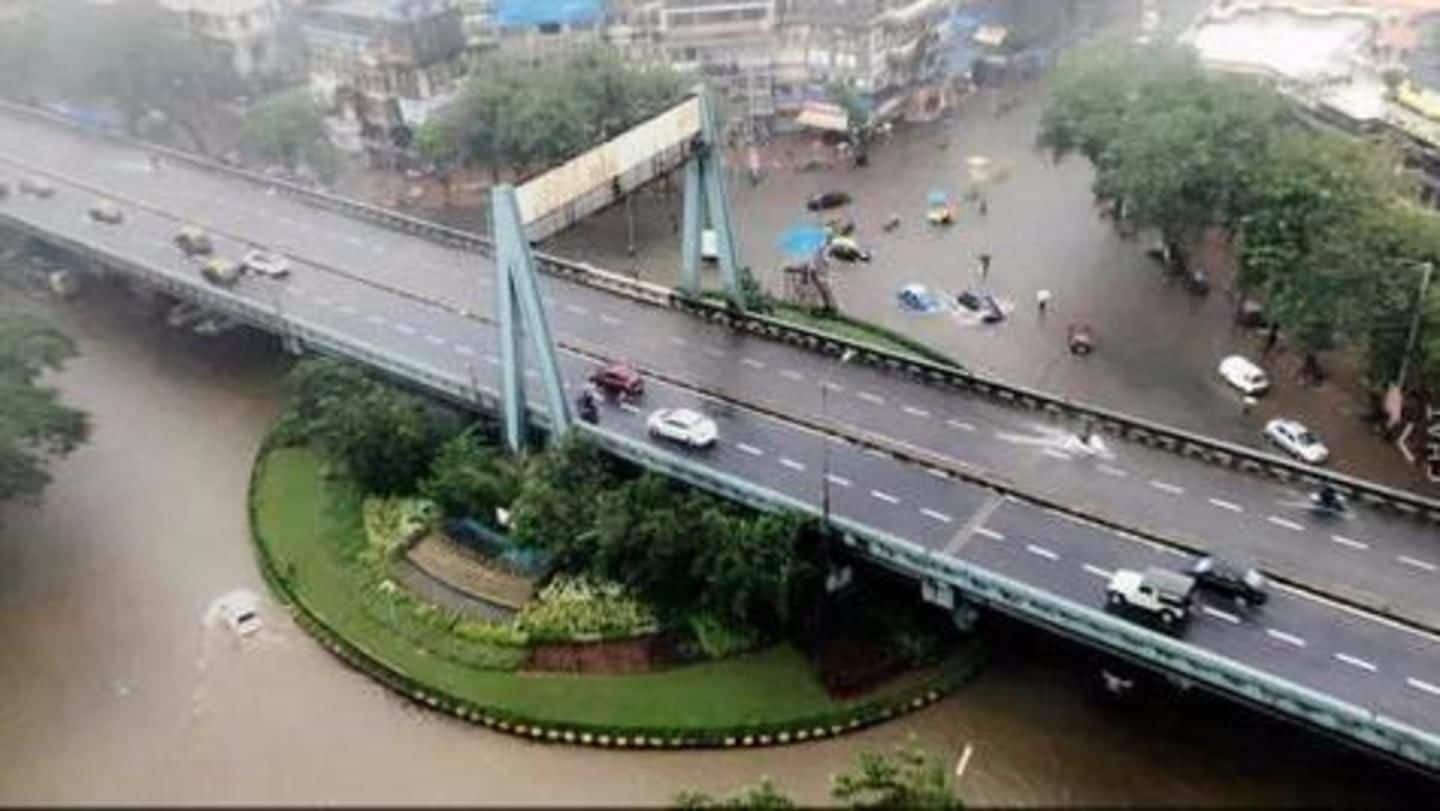
Why is Mumbai facing extreme rainfall? Here, we decode
What's the story
Mumbai has been experiencing severe rainfall over the last few days, and as of now, schools are shut, traffic is held-up, and several locations in Vasai are cut-off due to floods. Yet, what's happening in Mumbai is part of a much larger trend, and India can expect to see frequent incidences of extreme rainfall events, owing to increasing amounts of anthropogenic emissions. What does it mean? We elaborate.
Details
Anthropogenic emissions have been found to increase extreme rainfall events
While earlier studies had shown a rising trend of extreme rainfall events in India, a recent study by IIT Gandhinagar (IIT-Gn) and US-based Lawrence Berkeley National Laboratory (LBNL) has established that anthropogenic factors play a significant role in extreme rainfall events in India. The study found that anthropogenic emissions - greenhouse gas emissions from human activities - increase extreme rainfall events by 10-30%.
Data
Increases in sub-daily rainfall extremes might pose a serious threat
The researchers also found that sub-daily rainfall extremes would increase by 20% if global temperature rises by 1.5°C, and by 25% if temperature increases by 2°C over pre-industrial levels. Sub-daily rainfall extremes are less understood than daily extremes, and hence more difficult to predict.
Regional warming
Both local and regional warming are contributing to extreme rainfall
It's interesting to note that it is not just local warming, but also regional warming that is leaving a mark on India. With increasing temperature, the moisture-holding capacity of the atmosphere increases, and scientists have found moisture content increases in the atmosphere over the Indian subcontinent, resultant of temperature increases not just in India, but over the Arabian Sea region.
Regional distribution
South and Central India to bear the brunt
Notably, the influence of anthropogenic emissions on extreme rainfall events is likely to be more pronounced in Southern and Central India, with these regions expected to witness a significant rise in frequency of extreme rainfall events by mid or end of 21st century. As the century progresses, these regions are likely to see extreme rainfall events once every two years, compared to the current 30-year frequency.
Implications
Increased extreme rainfall can have dire consequences for India
The implications of an increase in extreme rainfall events are serious. India has already seen major incidences of highly damaging extreme rainfall over the last decade, including the 2005 Mumbai floods, the 2013 Uttarakhand floods, and more recent floods in Tamil Nadu (2015) and Bengaluru (2016). Significant increases in frequency of extreme rainfall events can have dire consequences on infrastructure, agriculture, and water resources.
Effects
Short bursts of extreme precipitation don't do much good
In particular, it is short bursts of extreme precipitation that has scientists worried. While extreme rainfall events might lead to an increase in total rainfall, they don't alleviate water stress or contribute to groundwater recharge. On the contrary, much of the rain discharge during events of extreme precipitation are difficult to manage and often results in flash floods which are damaging to infrastructure and human lives.
Quote
Adaptation and mitigation efforts are crucial for the near future
"We can expect detrimental impacts of these on infrastructure as well as agriculture. This also highlights the need for initiating adaptation and mitigation to avoid the risk and damage due to extreme rain and flooding," said Dr. Vimal Mishra, an author of the IIT-Gn-LBNL study.
Recent evidence
Bengaluru, Mumbai, Chennai have all faced extreme rainfall of late
It doesn't take an expert to see rising trends of increasing rainfall in India, if one follows the news. This year itself, Bengaluru received 35% of its average rainfall even before the onset of monsoons. Meanwhile, Mumbai has already faced one bout of extreme rainfall in June. In end-2017, Chennai received heavy rains which disrupted several services and killed at least 12.